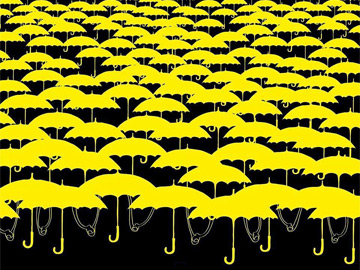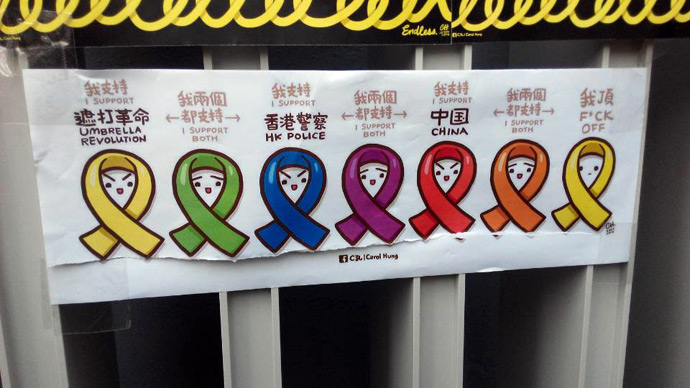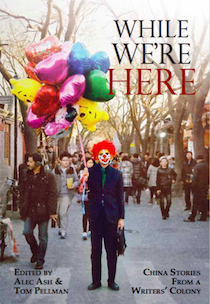Cantonese Tuesdays: Umbrella Evolution
Terms and symbols from the Hong Kong protests – by Rosalyn S

All eyes are on the Occupy Central protests in Hong Kong. But because the biggest gatherings are at Admiralty up the road, some local newspapers have renamed the movement from 佔中 (zhànzhōng – zim3 zung1) to the identically pronounced 佔鐘, where the second character is a stand in for Admiralty (金鐘 jīnzhōng – gam1 zung1).
Occupy Central isn’t the only misnomer. After pictures of unarmed protesters using umbrellas to shield against police attacks appeared next to international headlines, the foreign media has coined the catchy sound bite, Umbrella Revolution (雨伞革命 yǔsǎn gémìng – jyu5 saan3 gaak3 meng6).
Umbrellas have long been a feature of Hong Kong’s pro-democracy movements (such as the annual July 1st SAR Establishment Day rally) as a useful defence from both scorching heat and pouring rain. This year’s June 4th candlelit vigil was marked by thunder, rainstorms and power outages. Social media was full of images of lit candles shielded by brightly colored umbrellas, often accompanied with the lyrics from a pro-democracy song: “無論雨怎麼打, 自由仍是會開花” (wúlùnyǔzěnmodǎ, zìyóuréngshihuikāihuā – mou4 leon4 jyu5 zum2 mo1 daa2, zi6 jau4 jing4 si6 wui5 hoi1 faa1 – “no matter how hard the rain falls, freedom will still blossom”).
Supporters of the occupation have certainly embraced the umbrella as a visual symbol of protest. Reports have described umbrellas “blossoming everywhere” (遍地開花 biàndì kāihuā), a nod to the Hundred Flowers Campaign. But the organisers and student leaders resist the term Umbrella Revolution. The term revolution (革命 gémìng) suggests that the movement’s objectives include overthrowing the government, whereas they insist they are calling for improvements to the process for nominating and electing the chief executive, not revolution. They prefer the term 全民運動 (quánmínyùndòng) or “mass movement”.
Despite the insistence on proper terminology, political protests in Hong Kong have always been occasion for visual jokes and wordplay. While 雨傘 is the more formal term for umbrella that typically only appears in Hong Kong in print, the common Cantonese slang for umbrella 遮 (zhē, ze1), is also a symbolic verb meaning to cover and shield – in this case against undemocratic elements. Another verb 撑 (chēng, caang1 – to hold up) has been paired with the umbrella to represent supporting the protests. The word for Chater Road (遮打道 zhēdádào), a major artery in Central, sounds like umbrella, leading one local artist to label the movement the Chater Revolution.
Other visual symbols featured during the protests include caricatures of CY Leung as a wolf, after his nickname, and stuffed Lufsig wolf toys hung from yellow-ribbon nooses. Colour coding also plays a role. Supporters of the movement typically wear black shirts and yellow ribbons. Student organisers have called for classmates boycotting school to wear white. Whereas, anti-protesters and supporters of the Hong Kong police force have worn blue shirts and blue ribbons.
Whatever you call it, the umbrellas are blossoming, and they are here to stay.
•
Rosalyn S is from Hong Kong and lives in Beijing. See her previous Cantonese Tuesdays posts here

Protest art by Carol Hung
















